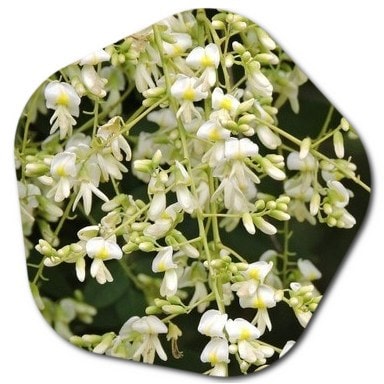How often does the Japanese pagoda tree flower?
The Japanese pagoda tree, also known as Sophora japonica, typically flowers once a year. The exact timing of flowering can vary depending on local climate and environmental conditions, but it generally occurs in late summer to early autumn. The flowers of the Japanese pagoda tree are small, creamy white to pale yellow in color, and grow in clusters. They have a pleasant fragrance and attract pollinators such as bees and butterflies.
After the flowering period, the Japanese pagoda tree produces seed pods that contain seeds. These pods persist on the tree throughout the winter months, providing visual interest even after the flowers have faded.
It’s worth noting that the flowering patterns of individual trees can also be influenced by factors such as age, health, and growing conditions. Some mature trees may produce more abundant and noticeable blooms compared to younger or stressed trees.
How long does a pagoda tree take to flower?
The Japanese pagoda tree, or Sophora japonica, typically takes several years to reach maturity and begin flowering. The exact time it takes for a pagoda tree to flower can vary depending on various factors, including growing conditions, genetics, and cultivation practices.

On average, a healthy Japanese pagoda tree can start to produce its first flowers when it is around 5 to 7 years old. However, it’s important to note that this is a general estimate, and individual trees may have slight variations in their flowering timeline. It’s worth mentioning that young pagoda trees may not produce as many flowers as mature trees. As the tree continues to grow and establish itself, it will develop a stronger root system and allocate more energy towards flower production.
Once a Japanese pagoda tree reaches maturity and begins flowering, it will typically flower annually, usually in late summer to early autumn. The duration of the flowering period can vary, but it generally lasts for several weeks. Remember that the specific flowering behavior of a pagoda tree can be influenced by local environmental conditions, including temperature, light exposure, and water availability.
How fast does Japanese pagoda tree grow?
The growth rate of the Japanese pagoda tree, or Sophora japonica, can vary depending on factors such as environmental conditions, soil quality, and cultivation practices. Generally, the Japanese pagoda tree is considered a moderately fast-growing tree.
In optimal conditions, a Japanese pagoda tree can grow around 1 to 2 feet (30 to 60 centimeters) per year. However, the growth rate can slow down as the tree matures. It’s important to note that growth rates can be influenced by factors such as available nutrients, water supply, sunlight exposure, and the overall health of the tree.
The Japanese pagoda tree typically reaches a height of 30 to 50 feet (9 to 15 meters) at maturity, with a spread of about 20 to 40 feet (6 to 12 meters). It can take several decades for a Japanese pagoda tree to reach its full mature size.
It’s worth noting that specific growth rates can vary based on individual trees and local conditions. Providing the tree with adequate care, including regular watering, proper pruning, and nutrient-rich soil, can promote healthier growth and potentially enhance the tree’s growth rate.
What is the flower of Japanese pagoda tree?
The flower of the Japanese pagoda tree, Sophora japonica, is a small, fragrant, and visually striking blossom. The flowers grow in clusters or panicles, which are elongated, drooping clusters of individual flowers. Each flower is composed of five petals and has a distinct shape.
The Japanese pagoda tree’s flowers are typically creamy white to pale yellow in color. The petals are often reflexed or bent backward, giving the flower a unique appearance. The blossoms have a pleasant fragrance that adds to their appeal.
The flowering period of the Japanese pagoda tree usually occurs in late summer to early autumn, typically around August or September in many regions. The flowers are attractive to pollinators such as bees and butterflies, which help in the process of pollination.
After the flowering period, the tree may produce seed pods that contain seeds. These pods persist on the tree throughout the winter, adding visual interest even after the flowers have faded.
What is the lifespan of a pagoda tree?
The lifespan of a Japanese pagoda tree, or Sophora japonica, can vary depending on various factors such as growing conditions, disease susceptibility, and environmental factors. On average, a healthy pagoda tree can live for 50 to 100 years or more.
With proper care and suitable growing conditions, some Japanese pagoda trees have been known to reach ages of 150 years or even longer. However, it’s important to note that individual trees can have different lifespans, and there can be variations within the species.
Factors that can affect the lifespan of a pagoda tree include:
- Growing conditions: Providing the tree with optimal soil conditions, adequate water supply, and sufficient sunlight can contribute to its overall health and longevity.
- Disease and pests: Pagoda trees can be susceptible to certain diseases and pests. Proper monitoring, timely treatment, and preventive measures can help prolong the tree’s lifespan.
- Environmental factors: Extreme weather conditions, such as drought, heavy winds, or severe cold, can impact the tree’s health and longevity. Trees planted in urban areas may face additional stressors such as pollution and compacted soil.
- Maintenance and care: Regular pruning, appropriate fertilization, and overall tree maintenance practices can enhance the tree’s health and potentially extend its lifespan.
While the Japanese pagoda tree is not considered as long-lived as some other tree species, it can still provide beauty, shade, and ecological benefits during its lifespan. How long does a pagoda tree take to bloom? >>





